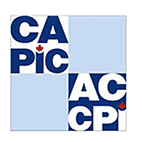Canada’s immigration system is essential for its growth. Not only does it make the country’s culture more diverse, but it also supports its economy. The IRCC is taking bold steps to ensure a bright future, updating several Canada immigration rules for 2025. The main goal is to reduce the country’s overall population to help with problems like the shortage of affordable housing and strained public services.
Let’s examine what we can expect from 2025 and how it might impact your immigration plans.
Key Changes in Immigration Policies
1. Reduction in Immigration Targets
Canada is taking a sharp turn from its usual trend of welcoming more newcomers. In 2025, the PR target will drop to 395,000, much lower than the 485,000 in 2024. This number will keep going down, with targets set at 380,000 for 2026 and 365,000 for 2027.
Why the cutbacks?
To slow down the increasing population. In the last few years, over 90% of Canada’s population growth has been because of immigrants, and this has put a lot of pressure on the housing market. Not only are there few homes, but prices are also at an all-time high.
On top of that, public services like healthcare, education, and transportation are having trouble serving so many people. The country’s infrastructure just doesn’t have the capacity and this is making it harder for newcomers to settle in.
2. In-Canada Focus
With so many temporary residents entering Canada over the past ten years, the government wants to reduce this number from 6.2% to 5% of the total population within the next three years. The hope is that by doing so, there will be less pressure on public services and infrastructure.
There are several ways the IRCC plans to achieve this number:
- Temporary to Permanent: Transitioning up to 40% of temporary residents to permanent. This will make the immigration-Canada 2025 immigration process easier for those already in Canada and help fill gaps in the job market.
- International Student Cap: Canada is limiting the number of study permits to international students by 35% over the next two years. This move will decrease the number of people who need housing, which in turn, will reduce pressure on the housing market.
- Post-Graduation Work Permit Program (PGWPP) Changes: PGWPP rules have become stricter, meaning only those who are needed in the workforce will get the permits. This move ensures important positions are filled without bringing in extra temporary residents.
- Temporary Foreign Worker Program Changes: Canada is limiting the number of low-wage workers employers can hire to only 10% of their total workforce. Additionally, there is a restriction on hiring low-wage workers in areas where the unemployment rate is 6% or higher. However, there are a few exemptions to this rule for sectors such as primary agriculture, food processing and fish processing.
- Limiting Work Permits for Spouses of Temporary Residents: The IRCC is making rules stricter for work permits for spouses of international students and temporary foreign workers. This is to make sure the number of newcomers is in line with the country’s current job market and infrastructure capacity..

3. Provincial Nominee Programs (PNPs)
The Provincial Nominee Program (PNP) helps provinces choose candidates who match their local job market needs. However, big changes have been made. The federal government has reduced the number of PNP admissions for immigration-Canada 2025 dramatically—from 120,000 down to just 55,000.
While lowering the cap will create some challenges, it also encourages provinces like Manitoba and Saskatchewan to focus on important areas like agriculture, healthcare, and other jobs that are in high demand. In the long run, this will help improve the local economy and make it more likely for newcomers to stay in those areas and settle down, contributing to regional communities.
4. Express Entry Program Changes
The Express Entry Program is also being updated to better meet Canada’s changing needs. This includes category-based draws that target candidates in growing industries such as trades and healthcare.
Also, the IRCC will pay more attention to in-country applicants, meaning those already in Canada with temporary status, like international students or workers. Surveys have shown that those living and working in Canada more easily integrate into the local workforce and society.
There are also a few changes to the Comprehensive Ranking System (CRS). For those wondering, “Will CRS score go down in 2025?” The answer is no. However, now there are extra points for skills in new industries and for speaking more than one language. This is a big benefit for people who speak both English and French or have skills in jobs that are in high demand.
Moreover, there is a probability of the CRS going down if the job offer points of thousands of Temporary Foreign Workers (TFWs) are taken off this spring.
Start Your Canadian Visa Journey
Apply for the Canadian Immigration with our Licensed Experts.
5. Business Immigration Changes and Opportunities
Thanks to federal and provincial programs like the Start-Up Visa, Canada remains an attractive destination for entrepreneurs and investors. However, for business immigration in 2025, the focus is more on sectors like health care, trades, agriculture, and construction. The cap has also been lowered to 2,000 for both the Self-Employed Persons Program (SEPP) and the Start-Up Visa (SUV) program. In 2026, it will be reduced further to 1,000.
However, the eligibility criteria remain the same. Applicants must secure a financial Letter of Support in addition to investment support, if applicable, from an angel investor group, venture capital fund, or business incubator. They must also meet language proficiency and settlement fund requirements as per the previous year.
Please Note: The Self Employed Persons Program (SEPP) is currently suspended until 2026, and only previously submitted applications are being processed.
Trends in Canadian Immigration 2025
1. Economic Immigration
By 2027, approximately 62% of all permanent resident admissions will be based on the economic class. Key sectors include:
- Healthcare: With an aging population, there’s a growing demand for healthcare providers, including doctors, nurses, and medical technicians.
- Trades: Skilled tradespeople such as plumbers, electricians, and carpenters will remain essential to support infrastructure development and maintenance.
- Technology: The tech industry will continue to seek software developers, data analysts, and cybersecurity experts to drive innovation.
- Agriculture: Farmers and agricultural technicians will be needed to ensure food security and support the farm economy.
- Construction: Construction managers and skilled labourers remain crucial for building and maintaining infrastructure projects.
2. Francophone Immigration
Canada is increasing its focus on attracting French-speaking immigrants outside Quebec to strengthen Francophone communities nationwide. It also helps maintain the bilingual nature of Canada and preserve the French culture in regions where it is less common.
Over the next three years, admission targets for immigration-Canada 2025 are as follows:
- 8.5% for 2025
- 9.5% for 2026
- 10% for 2027
These targets are higher than in previous years. So, even though the total number of permanent residents will decrease, the goal is to increase the number of French-speaking immigrants.
Other steps to support Francophone immigration include expanding the Francophone Mobility Program and starting the Francophone Community Immigration Pilot in 2025. This program will bring skilled workers to rural areas and French-speaking communities in Canada.
There will also be more Express Entry draws focused on French speakers and new programs to attract Francophone immigrants across the country.
3. Public Sentiment and Political Influences
Recent surveys (we cannot send links to competition platforms like CIC) show that many Canadians worry about the country’s ability to support immigrants, particularly in terms of housing and healthcare.
Rising Housing Costs: There is a growing concern that high immigration has pushed up the cost of housing, especially in major urban centres. Housing prices have been up by more than 30% since 2020, and 3 in every 4 Canadians believe high immigration is making this problem worse. The limited availability also makes it harder for both newcomers and existing residents to secure affordable housing.
Less Access to Healthcare: As more people move to Canada, some worry that this puts too much pressure on the healthcare system. These concerns grow as residents face longer wait times. Surveys show that 15% of Canadians had trouble getting regular medical care, and 23% had difficulty with urgent care. New immigrants are also heavily affected by this issue. They were nearly 2.5 times more likely to report problems accessing urgent care.
To reduce these concerns, the Canadian government is launching public education campaigns to create a more welcoming environment. These campaigns explain the benefits of immigration and reassure people that housing and healthcare issues are being worked on.
Predictions for Canada Express Entry in 2025
1. Larger Canadian Experience Class (CEC) Draws
Canada will focus more on its in-country applicants in 2025. This means larger (or more frequent) CEC draws that invite anywhere from 3,000 to 7,000 candidates. This is excellent news for those already working in Canada and want to become permanent residents.
2. High CRS Cut-Offs
Due to the large number of temporary residents in Canada, the CRS score prediction for 2025 remains high – above 510, especially for Canadian Experience Class (CEC) draws. If you are looking to stand out, be sure to build a strong profile.
However, suppose IRCC takes off the Job Offer points in Spring, between March 2025 and June 2025. In that case, job offer points will be removed for thousands of Temporary Foreign Workers who also form a significant percentage of the Express Entry Pool. In this case, the overall CRS score of draws is also anticipated to come down.
3. More Invitations for French Speakers
Canada will continue prioritizing French speakers. French is an official language, after all! So, expect at least one dedicated French-language draw per month that issues 2,000 to 3,500 invites each time. If you’re bilingual, this is the perfect time to pursue immigration-Canada 2025!
4. More Trades and Healthcare Draws
With the demand for skilled trades and healthcare workers higher than ever, these sectors will likely have 2-3 dedicated draws. If you’re in any one of these fields, keep an eye out.
5. Elimination of Job Offer Points
IRCC has announced that the removal of job offer points will be implemented in Spring 2025. This will level out the system for those who meet the PR requirements but do not have a job offer. It will also counter the misuse of Labour Market Impact Assessments (LMIAs), leading to fewer fake job offers and preventing foreign workers from being charged extra money for LMIAs.
This change will lower the overall CRS score because job offer points will be removed for many Temporary Foreign Workers. This will make it easier for people without job offers to get higher scores and improve their chances in the Express Entry Pool.
6. Pause on Parents and Grandparents Program (PGP)
This year, Canada will not accept new applications for the PGP. Instead, the government will process up to 15,000 applications from 2024. This stop is because overall immigration targets are lower in 2025, so only 24,500 parents and grandparents are expected to arrive in 2025. That said, this is temporary, and the PGP is expected to restart in the future.
7. Continued LGBTQI+ Support
Canada has a strong history of helping those from the LGBTQI+ community, settling many through its refugee programs. However, due to a general decrease in immigration targets, the total number of refugees in 2025 will be reduced to 58,000. That means this year, we will likely see fewer refugees from the LGBTQI+ community.
Take Professional Help from Licensed Experts
Navigating immigration changes can be challenging. The latest updates present a unique opportunity to improve your chances, but understanding these changes is crucial.
Don’t leave your future to chance. Leverage the expertise of Keshav and the team at Elaar Immigration to help you through the process and enhance your profile. For personalized advice and assistance, reach out to our experts. Let their trusted professionals guide you to success.









